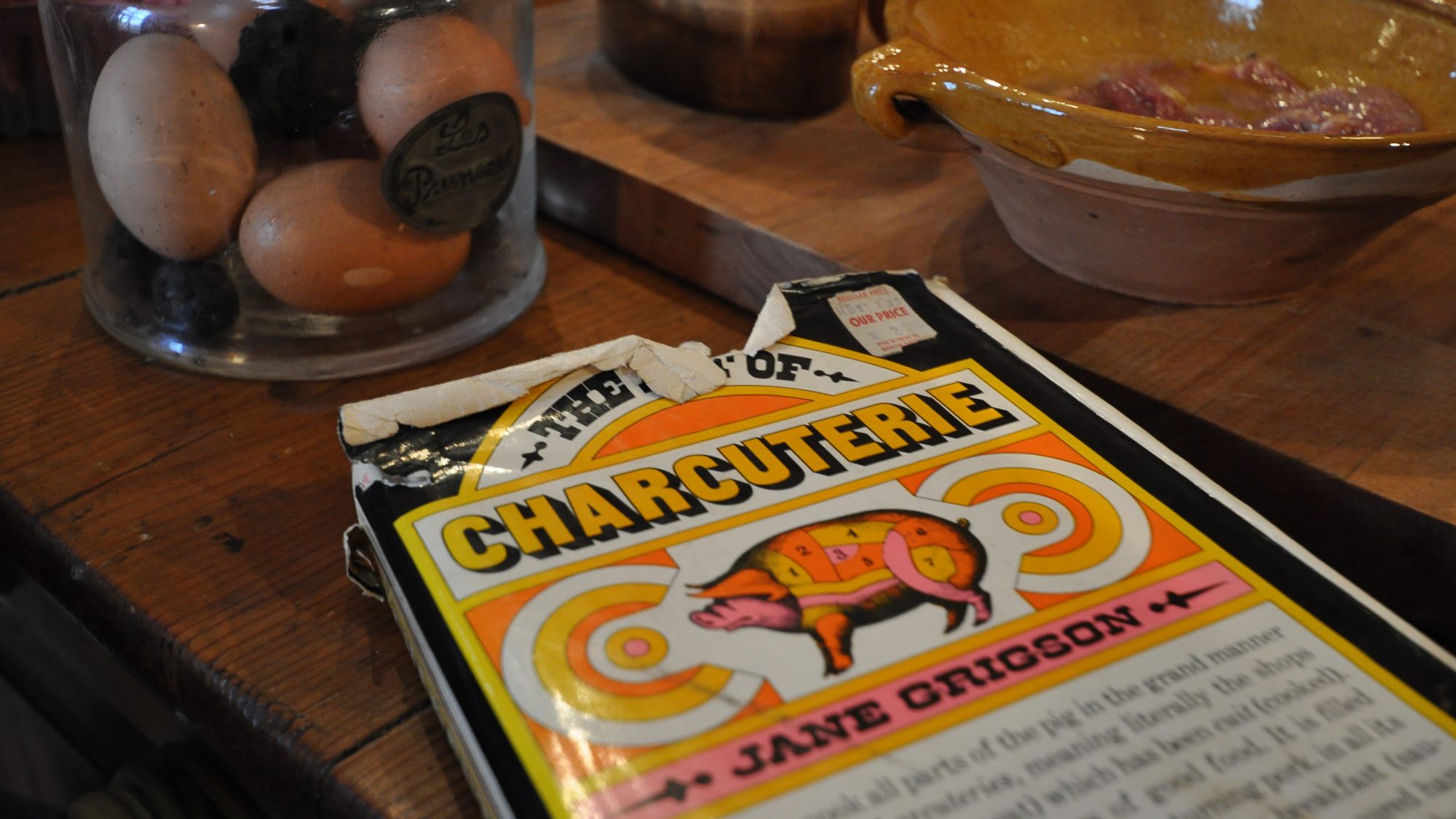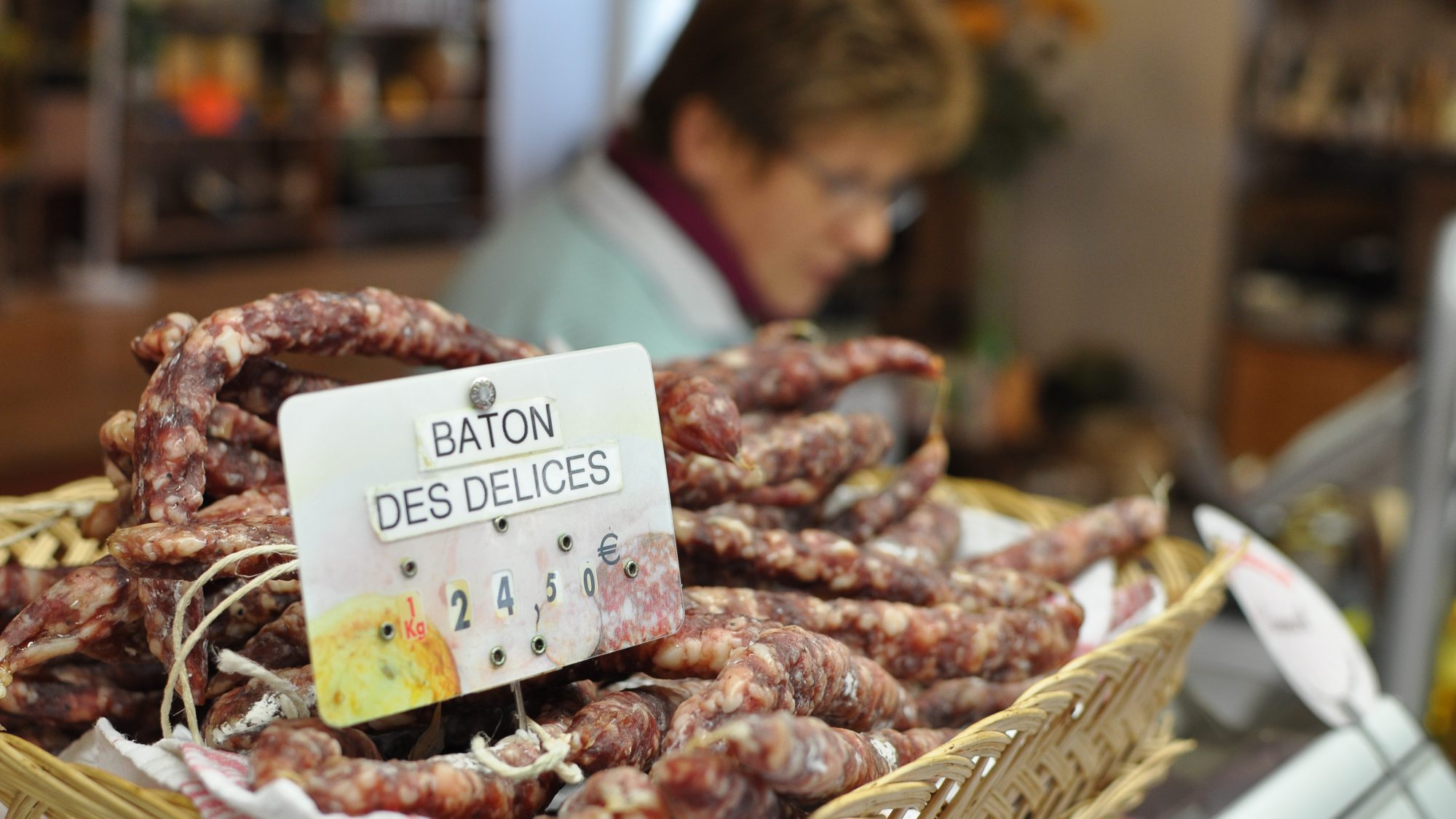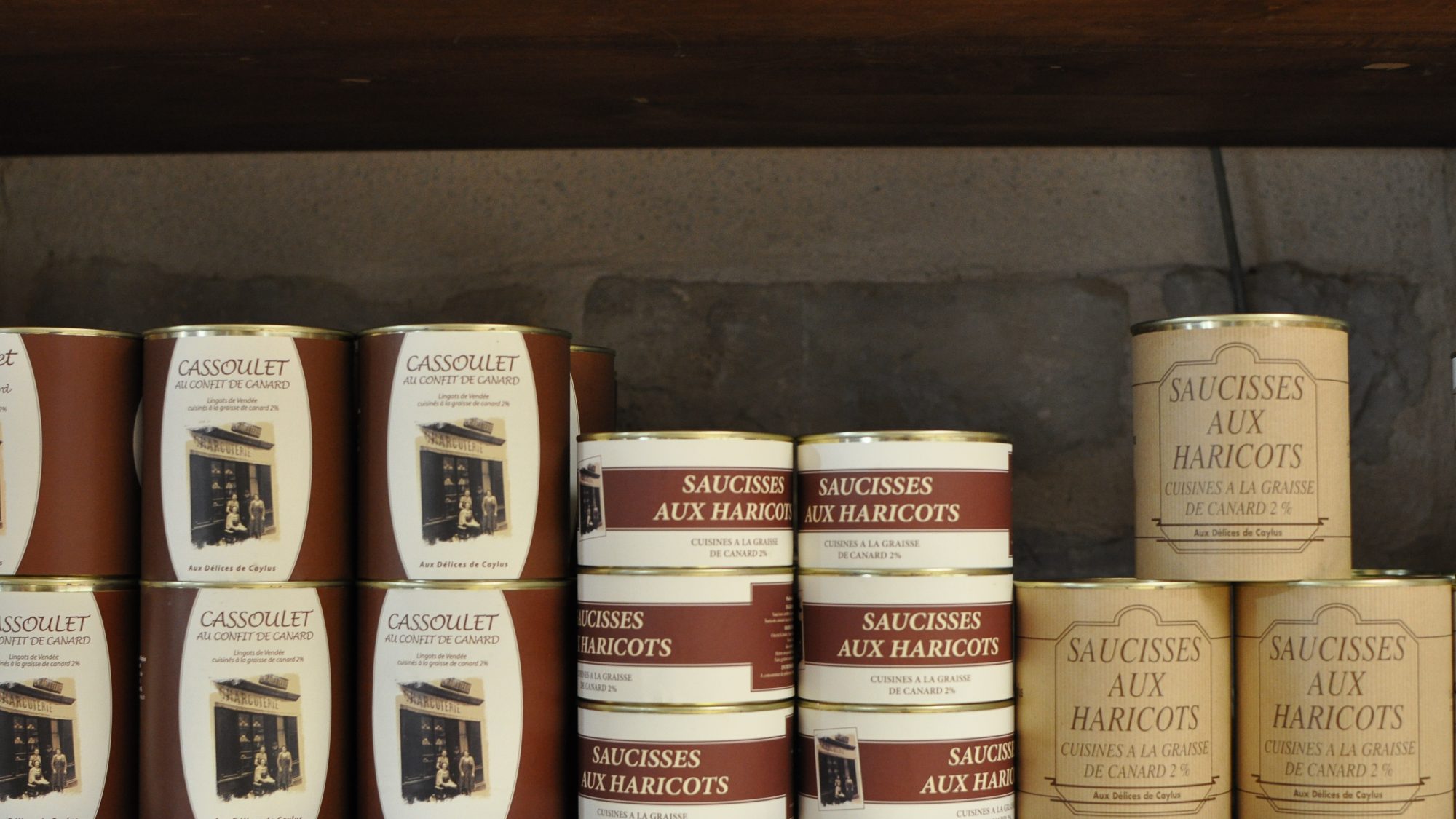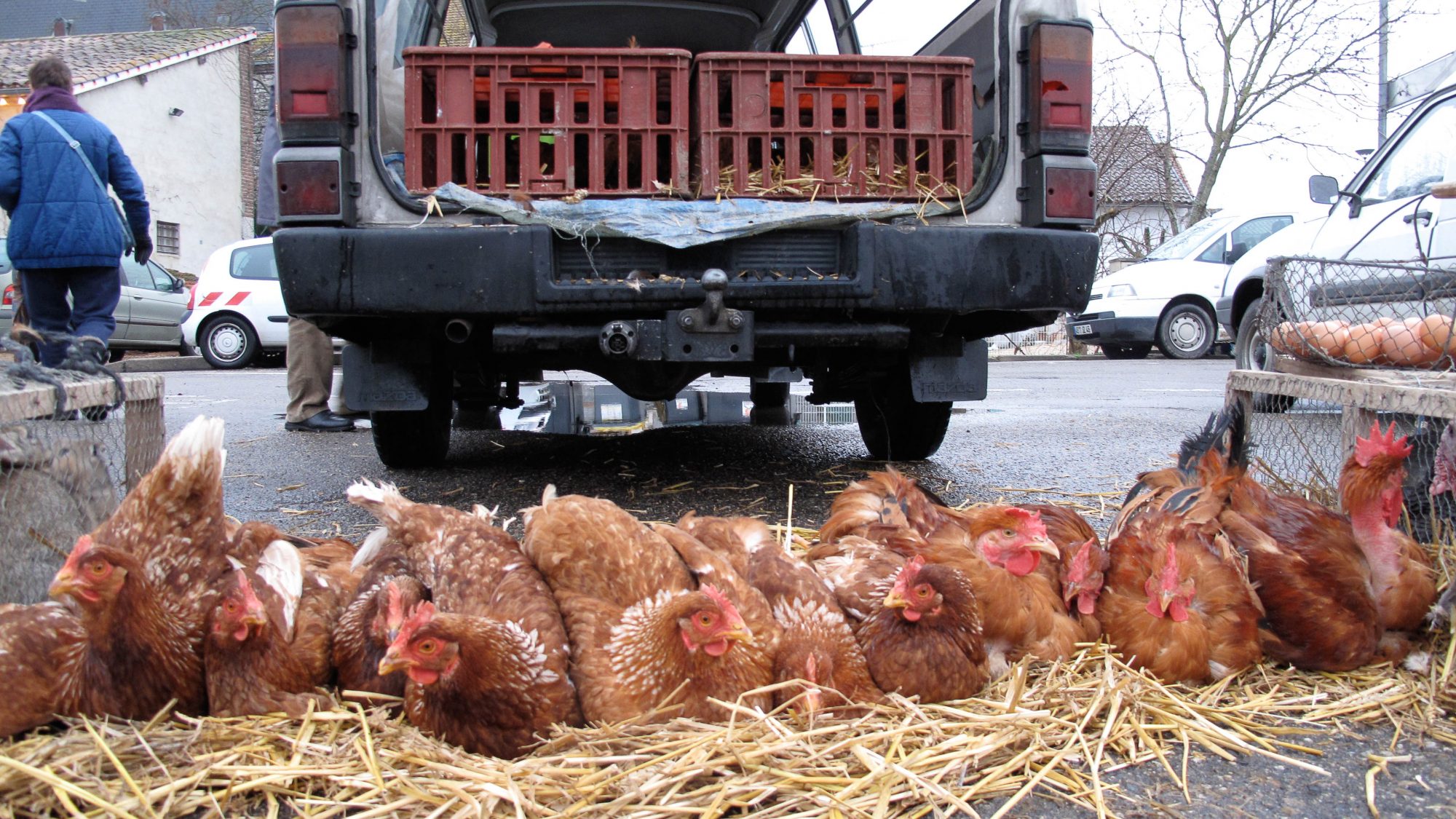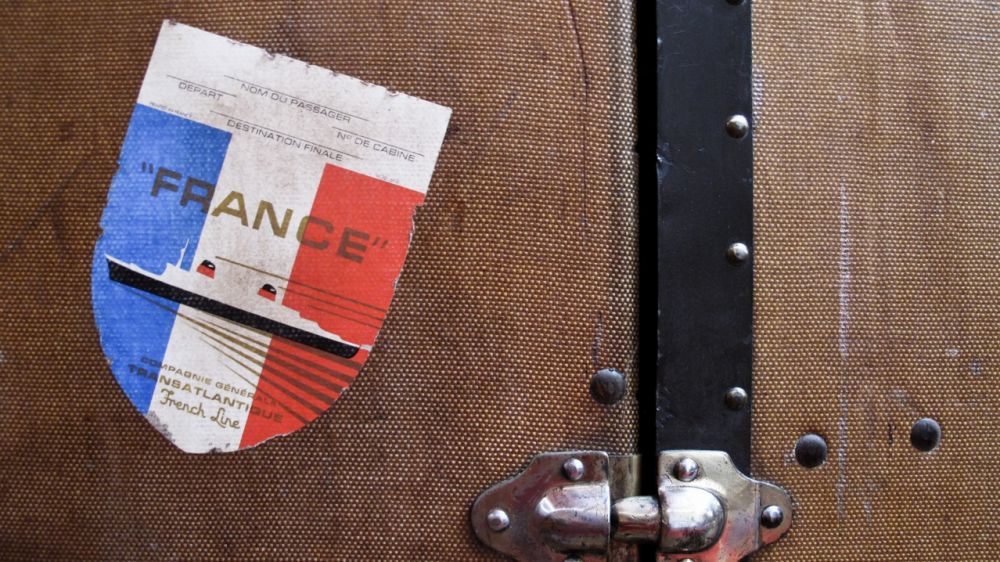Trufflepig recipes: Cassoulet
The ingredients for this daunting dish are many, and complicated. By far the most important of them are bravery and time. You cannot rush a cassoulet, and you cannot let it get the better of you. Those of you who are adventurous and gourmand enough to try this marvellous dish will find it will try to hurry you and harry you. Stay strong, soak your beans, and tend to your confit like a loving mother goose.
Before you even start, you have to understand that the cassoulet emerged from the mists of time in the same way that languages and hair styles creep out of the unfathomable depths of cultural mud. It is fruitless to try and pinpoint its individual birthplace. There is no “true” version—it is a peasant dish, and therefore, by definition, contains whatever you have on hand and want to include. Having said that, cassoulet is not the sort of thing you whip up twice in a week, for digestive reasons as well as time constraints.
The cassoulet contains a great deal of the peasant bank account: the fattened goose and the porky pig. Pigs, ducks and geese can be plumped up, killed and preserved in various ways over the winter. Confit de canard is the flesh of the duck cooked and preserved in its own flavoursome fat. In this way, the meat lasts for months or more, and indeed gets better with time. Ham, salted bacon and other cured pork products are similar in idea, although the pork in my version of cassoulet is primarily fresh, in the form of top-quality Toulouse sausage.
Bear one thing in mind: the glory of the cassoulet lies in the magical combination of goose fat and bean. Peaches and cream, gin and tonic, bacon and… well, bacon and everything; some things are meant to go together—this is one of the more unlikely marriages. Enjoy!
Preparation
Before you do anything you must soak your beans overnight. Avoid this step at your peril. No amount of cooking will soften an unsoaked bean, which will reap its vengeance on your digestive tract over the course of several painful and noisesome days. Also, I find it helpful to think a day ahead of time about where I’m going to get breadcrumbs from. Leave a loaf out in the air to go stale, which you can whizz up in a mixer. These are required in the final throes of the cooking.
Cooking and assembling is a three-stage process: first come the beans, then the meats (both fresh and confits), and then the final stage of everything together.
You can prepare the cassoulet the day before the meal and simply finish the cooking process on the day itself. Or you can put the whole thing together and cook it the same day that you intend to eat it. This is how I have always cooked it, but beware – it’s a 4-5 hour process. In both cases, you have to soak the beans the night before you start the assembly and/or cooking. Clear? As mud.
Ingredients:
• 1kg quality beans.
• Onion, garlic, peppercorns, ham bone
• 400g salted belly of pork
• Tins of confit de canard and confit d’oie (containing a variety of cuisses, ailes, cou farci if you like). About 1 kg in total.
• A forearm’s length of Toulouse Sausage (top quality – 100% pork)
• Breadcrumbs
Preparing the Beans:
1. Soak 1 kg dried white beans in lots of water overnight. Do not skimp on this time, or you will experience terrible digestive trouble. Lingots or cocos are best, from Tarbes, Lavelanet, Pamiers or one of the other towns that claim their beans are best if you’re a purist or a legume snob. This hardly matters, but buy top quality beans.
2. Drain the beans, and put into fresh cold water, and bring to a hard boil for 10 mins. or so.
3. Skim off any froth, and add an onion, several cloves of garlic, sliced carrot, lots of peppercorns, a ham bone if you can, and a strip of salt belly of pork (around 400g). Let simmer for about 45 mins., covered, until the beans are tender. The beans are taking on water and flavour from the other ingredients. You want them to become soft, but not to fall apart. Bite through one of them and make sure that it is cooked through and not hard in the middle. Now do the same with 4 more beans. Only when you’ve bitten through 5 perfect beans in a row are they ready (ancient wisdom). Different types of beans require different cooking times.
4. When they are ready as described, drain the beans. Discard the liquid and mulchy remains of the carrot, onion and ham bone (if you had one). Keep the cooked salt belly. The beans are ready to go into the cassoulet now, so while they were cooking, you may have been preparing the meats.
Preparing the Meats
First, decide which meats you want to include. Don’t be too ambitious—too many kinds of meat will only confuse the taste. My personal preference is for sausage (essential) and confits of duck and goose, depending on what is at hand. I don’t go for the addition of lamb, pork shoulder, rabbit, badger etc. that more elaborate recipes call for. But of course, the point is that any meat will work, and will produce a different result. You must have confits. I recommend duck and goose together… so:
1. Open the tins of confit to get a few spoonfulls of the goose or duck fat. Gently brown the sausage in some of this fat. The sausage must be high quality 100% pork sausage, with no added bread or starch. Add chopped up onions, and perhaps a carrot for colour, and some garlic. Fry them all until they’re browned, although remember the sausage is going to be cooked for several more hours so it doesn’t need to be cooked through.
2. Remove the sausage from the pan, and slice it up cleanly into large bite size pieces.
3. Put back in the pan with the onions etc, and cover with stock, or water if you have none. Never add red wine. Never add tomatoes – I mean, they only just invented those things after all. Let the meat and onions simmer in the liquid for 45 mins. or so. They are cooking gently, and the sausage will be softening without falling apart. When things are cooked, make sure you keep the liquid from the pan aside for putting in the cassoulet later on.
4. While it’s cooking, prepare the confits as follows. They are not the most attractive looking of things, and will be covered in fat. To remove them from their tins, sit them next to the stove or in a very gentle oven so the fat will melt a bit.
5. Strip off the skin and gently prise the meat off the bones. Keep the skin to fry up in an omelette, and the bones for making stock. It will be quite a messy business, but you will end up with a plate of succulent confit meat.
Assembling the Cassoulet
In an ideal world you have a cassole, a heavily glazed earthenware pot with a tight fitting lid and convex sides. But otherwise, you can easily make do with a Le Creuset style pot. It should be almost full with all the ingredients inside, so choose size accordingly.
1. Cut the rind off the salt belly of pork which was included in the bean cooking, and lay the rind fat side down on the bottom of the pot. Chop up the meat of the salt belly and lay aside.
2. Pour in half of the drained beans.
3. Lay the meat on top, a mixture of the sausage, confits and the chopped up salt belly of pork.
4. Pour on the rest of the beans.
5. Pour in the liquid in which you cooked the sausage, nearly up to the level of the top of the beans. Make up with water or stock, if need be.
6. Sprinkle a good layer of white breadcrumbs over the top.
7. Cover and put in the oven at 150 c or 300 f (Gas Mark 2) for about 1 hour. This can all be done ahead of time (even a day ahead to let the flavours mingle).
Cooking the Cassoulet
1. When you resume, stir the breadcrumbs in carefully with a big spoon. Make up the level of liquid with stock or water if necessary, but do this only once, or the cassoulet will have too much liquid. If the beans demand it at this stage, you must give them liquid.
2. Cover with a fresh layer of breadcrumbs, pour some melted goose fat over them so that they get crispy, and put back in the oven for another 2 hours or so.
* * * * * * * * * * * * *
Many recipes call on you to stir in the breadcrumbs 6 or 7 times, or as many times as there are b’s in the month, fish in the sea, stars in the sky or according to a complicated formula involving the frequency of chirrups from the nearest crickets. Apart from the obvious absurdity of most of the rules, I find that stirring the crumbs in tends to thicken up the already heavy texture of a good cassoulet, and while it can add a certain creaminess, it can push the whole thing over the edge.
So after your cassoulet has baked in the oven for a good long while, and the crumbs on top have turned a glorious golden colour (you may want to remove the lid temporarily to achieve this effect), remove it from the oven and serve piping hot. Accompanied by a light fresh red wine, and a little green salad with a sharp dressing, you will find that even the most skeptical of guests will be scraping the pot clean and begging you for your recipe. A note on the wine: don’t try for anything too heavy. It is a common misconception that all the southern French wines are dark and tannic, but there are a great deal of fresher spicier wines, which make a better match for the powerful cassoulet. If you can get hold of a Fronton, which has a pleasant peppery flavour and a light disposition, then serve it up.
Jack Dancy is working on his magnum opus: French Country Cooking in 4,539,544 easy steps. Contact him here to take issue with his dismissal of the coco vs lingot polemic.
